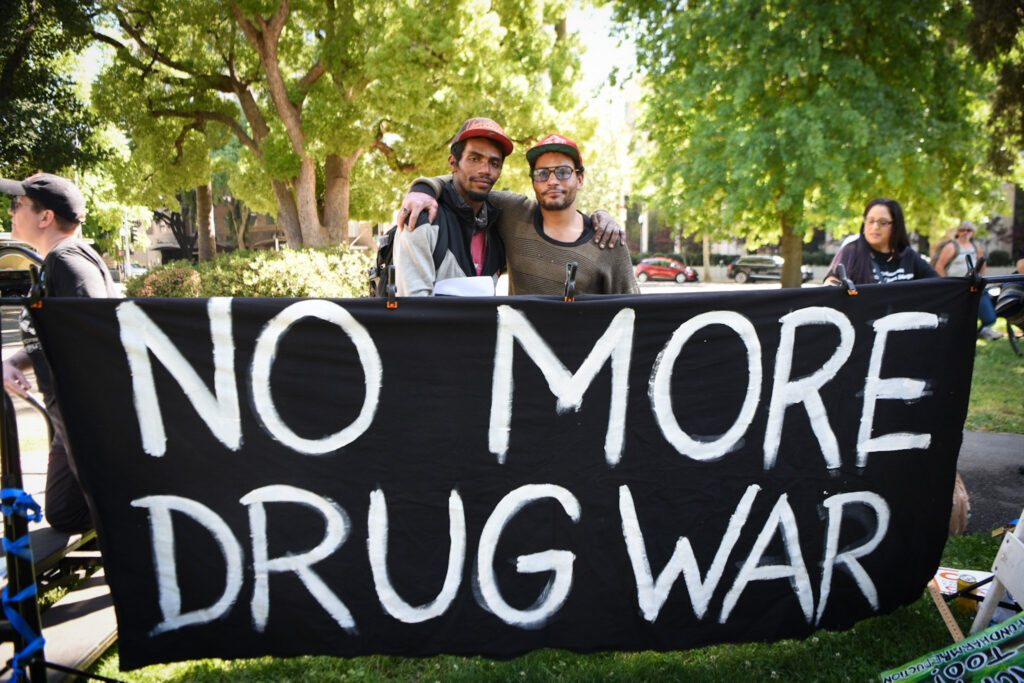CALIFORNIA MAKES HISTORY WITH HARM REDUCTION INVESTMENT
Funding supports CASEP’s life-saving work
With the largest investment in harm reduction in California’s history, National Harm Reduction Coalition (NHRC) is profoundly ecstatic about the state budget’s inclusion of $61 million over four years for life-saving programs and services stemming from California’s Opioid Settlement Funds. NHRC, the nation’s oldest advocate for harm reduction in the U.S., applauds the State of California for continued support of the network of safe syringe and overdose prevention services in the state. With funding championed by Assemblymember Chris Holden and Sen. Scott Wiener and allocated in the 2023-2024 budget, California will enable grassroots service providers to seamlessly continue providing lifesaving tools and services to Californians most likely to experience an overdose.
“We are so excited and grateful to the offices of Assemblymember Holden and Sen. Wiener, the legislature, Governor Newsom, and budget committees for funding these lifesaving services, the largest investment ever in harm reduction programming in the state. California’s own data confirm that programs funded under this initiative are the best way to prevent opioid overdose deaths, in particular among the most disproportionately impacted: Native American, Black, and Latino/x communities,” Acting Executive Director of NHRC, Laura Guzman, said.
This advocacy success is the result of a collaboration between NHRC, the End the Epidemics Coalition, the California Association of Syringe Exchange Programs (CASEP), and the Drug Policy Alliance, and included invaluable support from syringe services programs staff and program participants and harm reduction leaders across the state. This win is a testament to the implementation of funding for the California Harm Reduction Initiative (CHRI), led by NHRC in collaboration with 36 grantees across the state, which resulted in hundreds of thousands of overdose reversals and the training of thousands of people who use drugs to respond to overdoses in less than three years alone. Moreover, participants from programs that offered on-site medication for opioid use disorder (MOUD) were twice as likely to be currently prescribed buprenorphine and methadone than those in areas where on-site access was not available. More information about CHRI’s impact and associated data can be viewed here via the California Department of Health.
 Photo by Brooke Anderson, Movement Photography
Photo by Brooke Anderson, Movement Photography
Funding in the newly-adopted state budget funds the first of a four-year commitment to the Overdose Prevention and Harm Reduction Initiative using California’s Opioid Settlement Funds. This is a massive victory for harm reduction programs, which have been at the forefront of addressing the needs of people who use drugs by supporting their overall needs and assisting to reverse the most overdose deaths, as well as communities across California.
“Drug Policy Alliance applauds the leadership of Governor Newsom and the CA legislature to fund the CA Harm Reduction Initiative (CHRI) which will provide a critical investment to increase access to naloxone, the opioid reversal medication, drug testing strips, overdose prevention and response, and drug treatment and navigation to respond to the overdose crisis with a public health response. California’s historic investment will ensure that the most vulnerable communities across California have the tools they need to fight this crisis head on,” CA State Director for Drug Policy Alliance, Jeannette Zanipatin, said.
HIV Education and Prevention Project of Alameda County (HEPPAC) Executive Director Braunz E. Courtney said, “These funds will save lives and support services in Northern California SF East Bay, with special focus on Oakland, Alameda County, and Richmond, Contra Costa County. These two cities represent the highest population of Black/African American residents, which is over 80% majority of HEPPAC service recipients. CHRI has increased HEPPAC’s efforts to continuously provide harm reduction services that are proven to have a lasting healthy impact on communities disproportionately impacted by racism and inequality. Consistent funding will allow us to continue to do so.”
